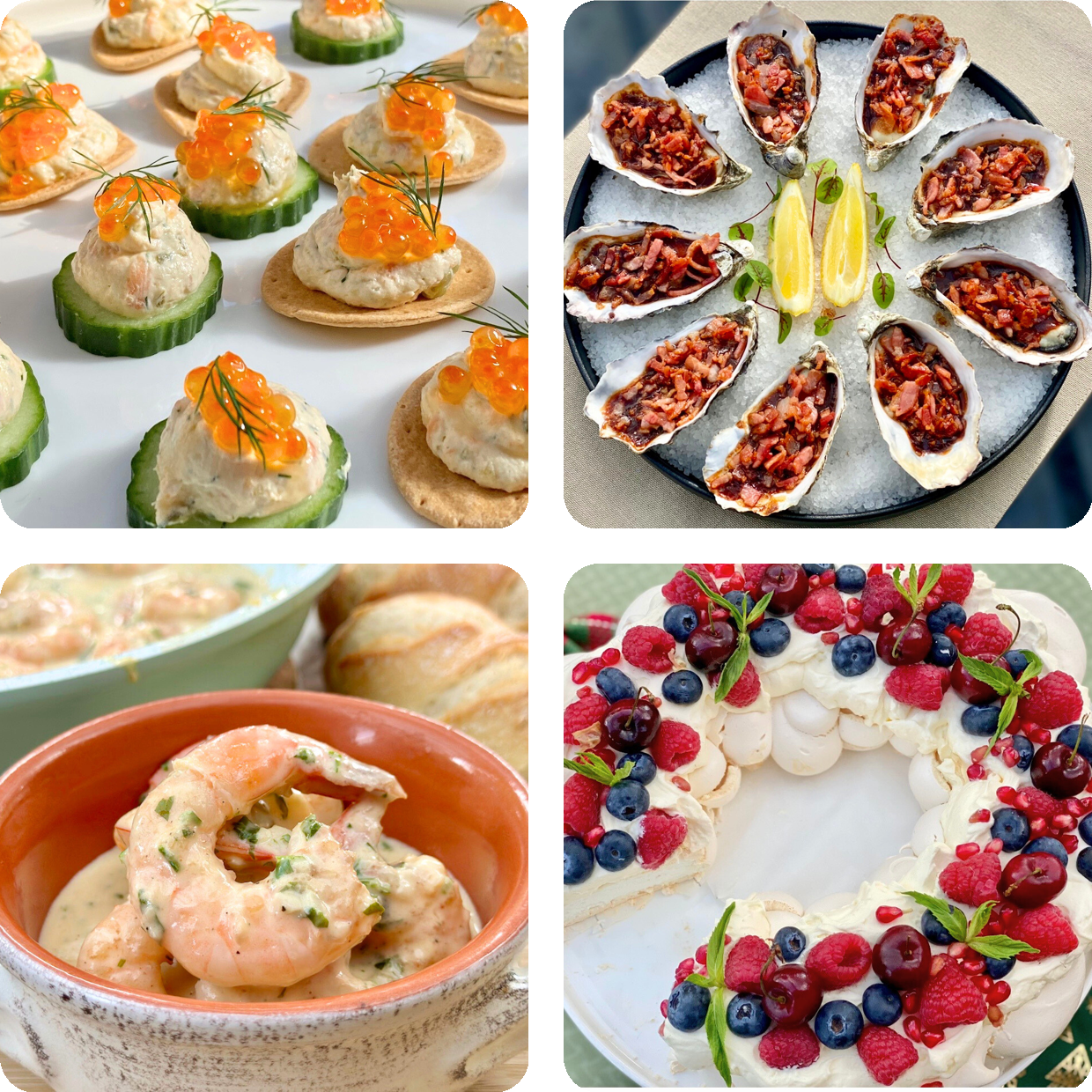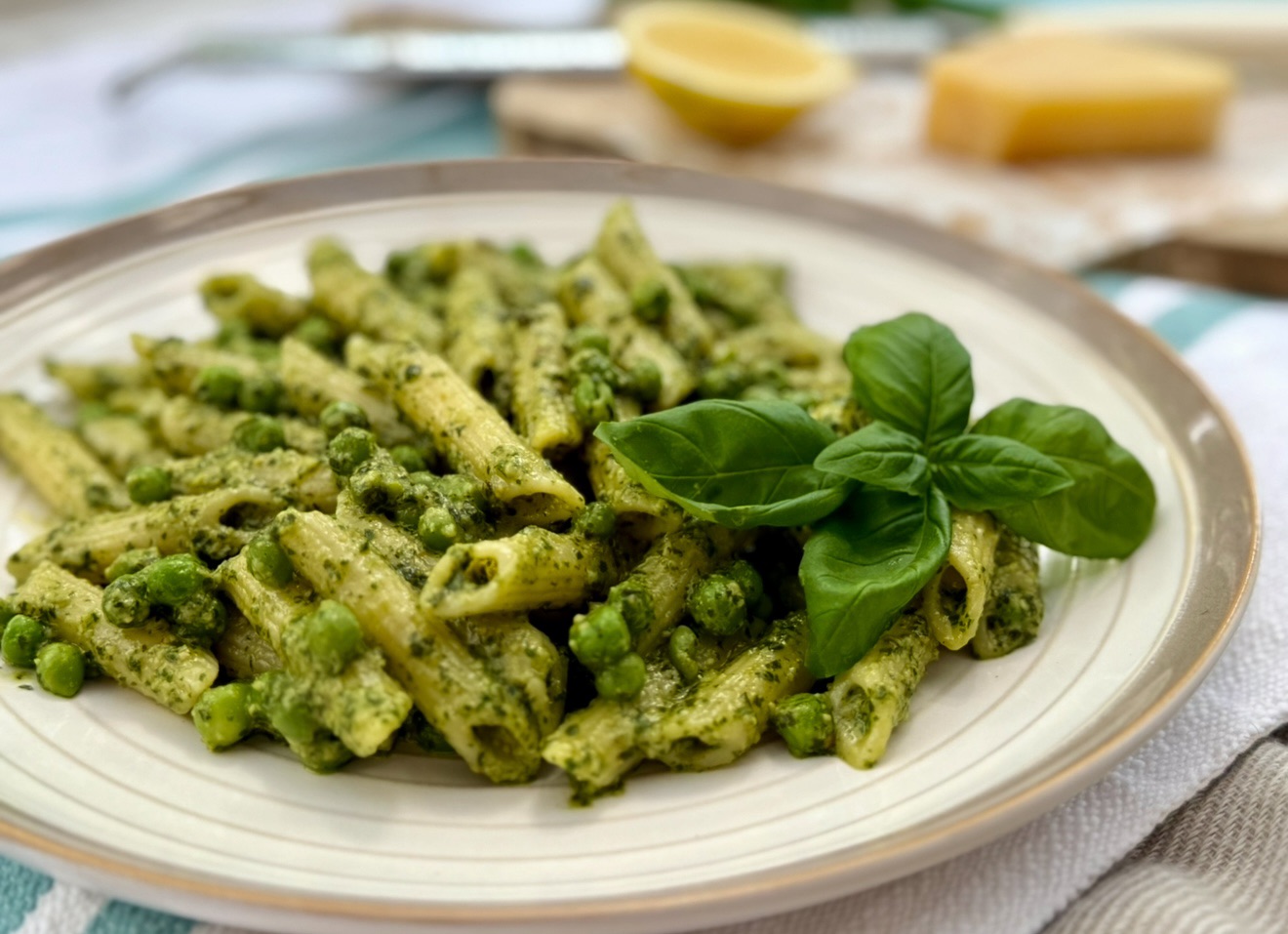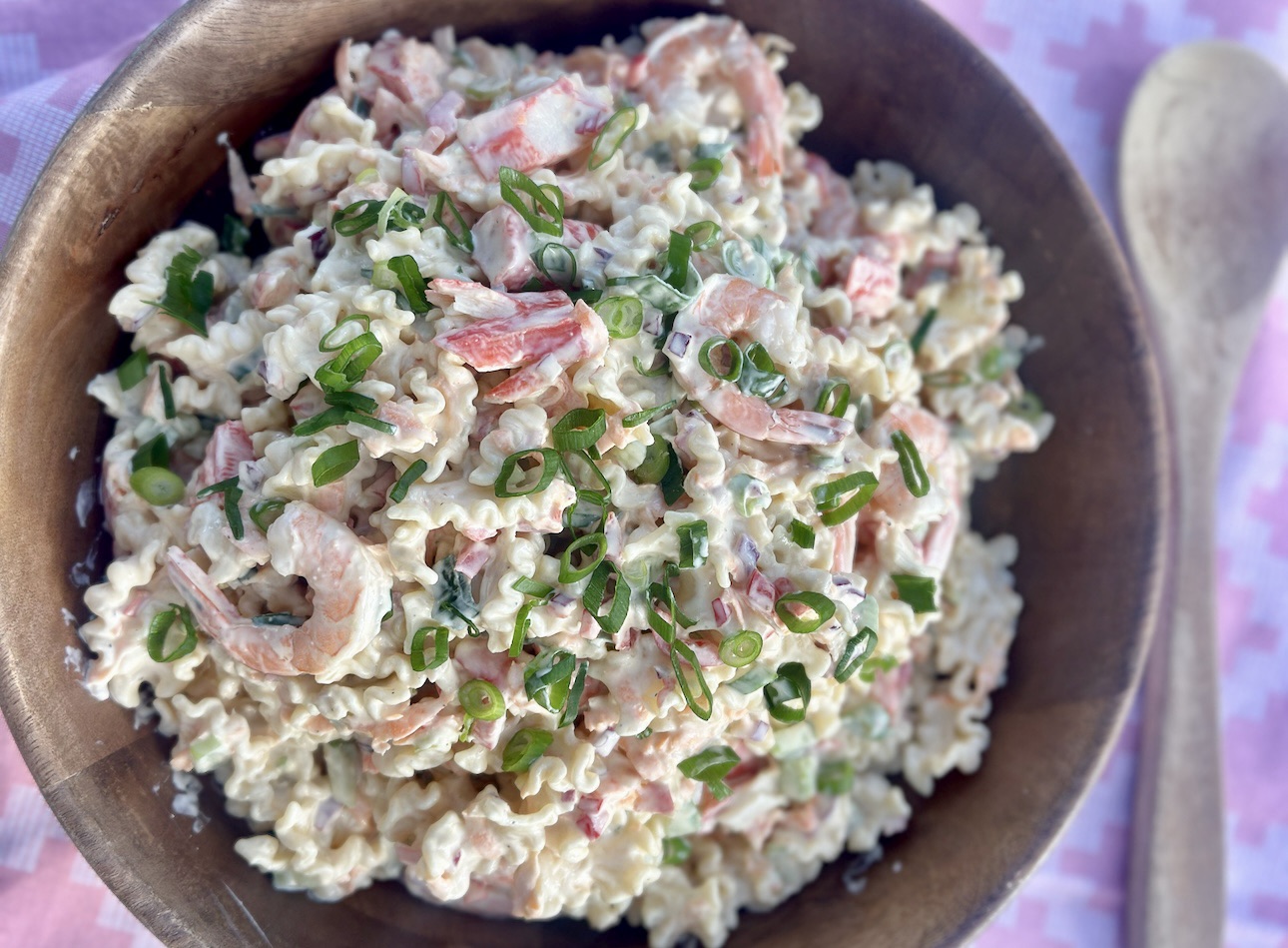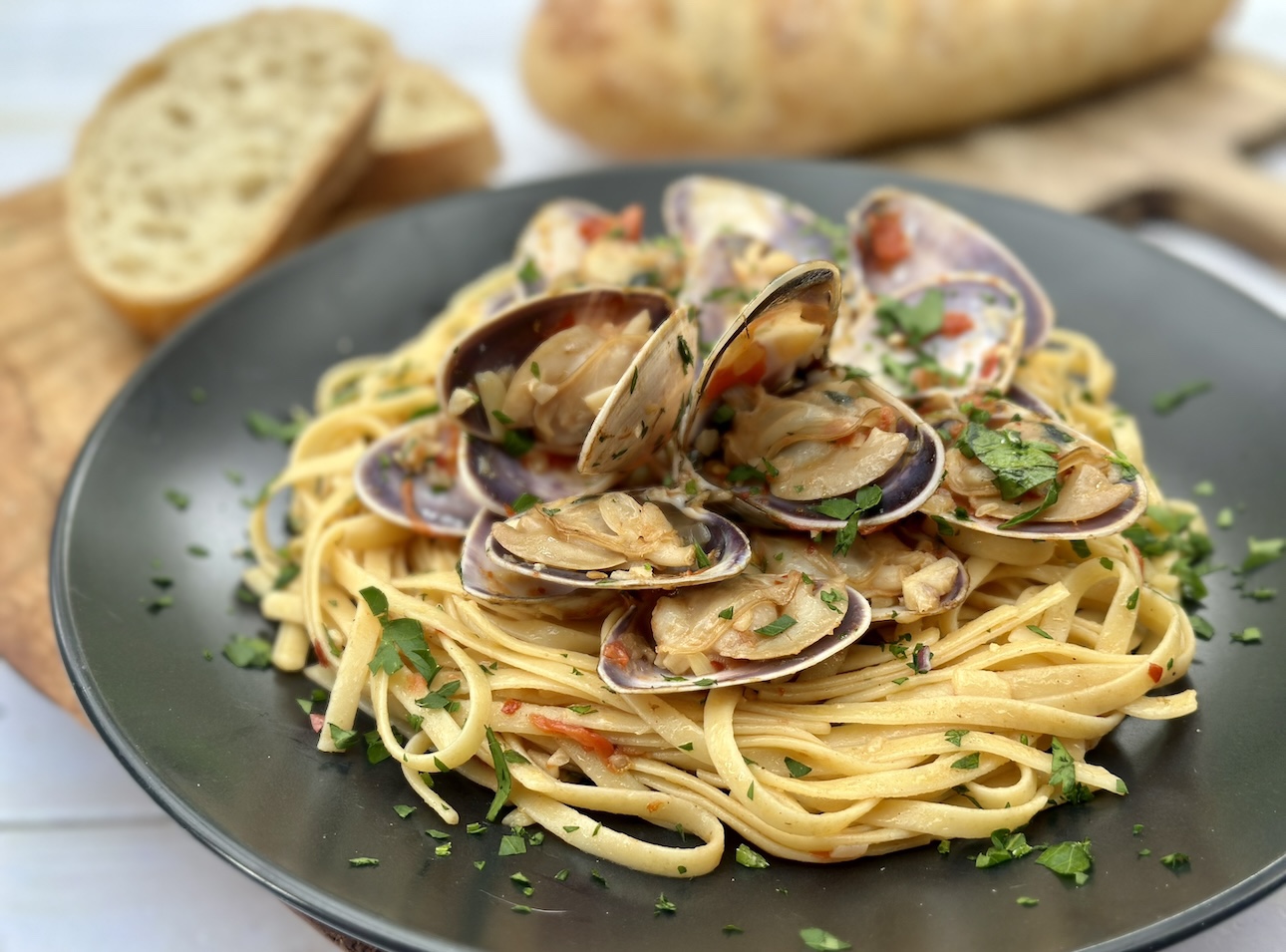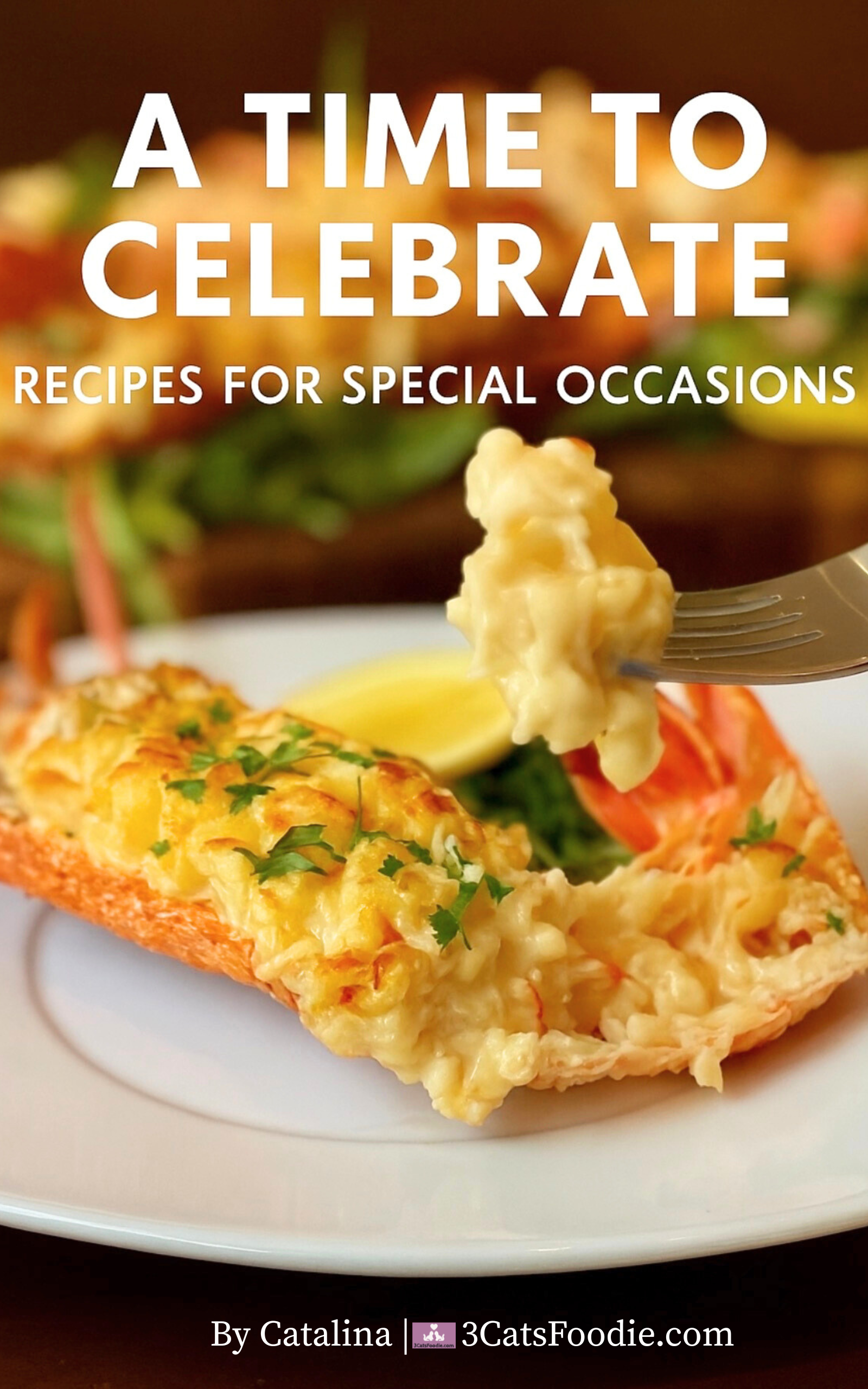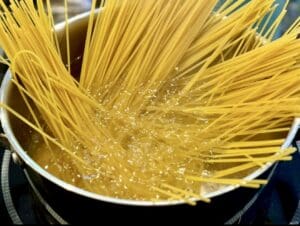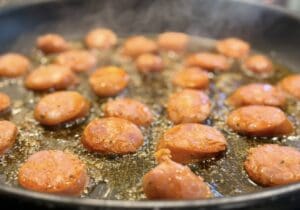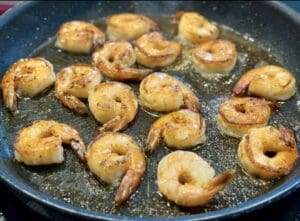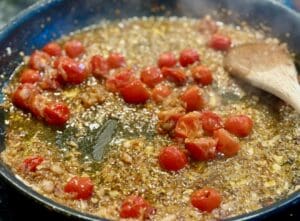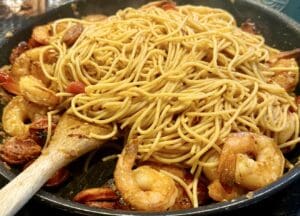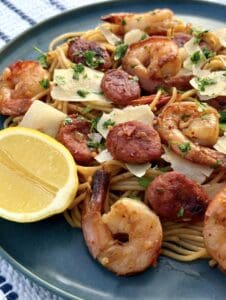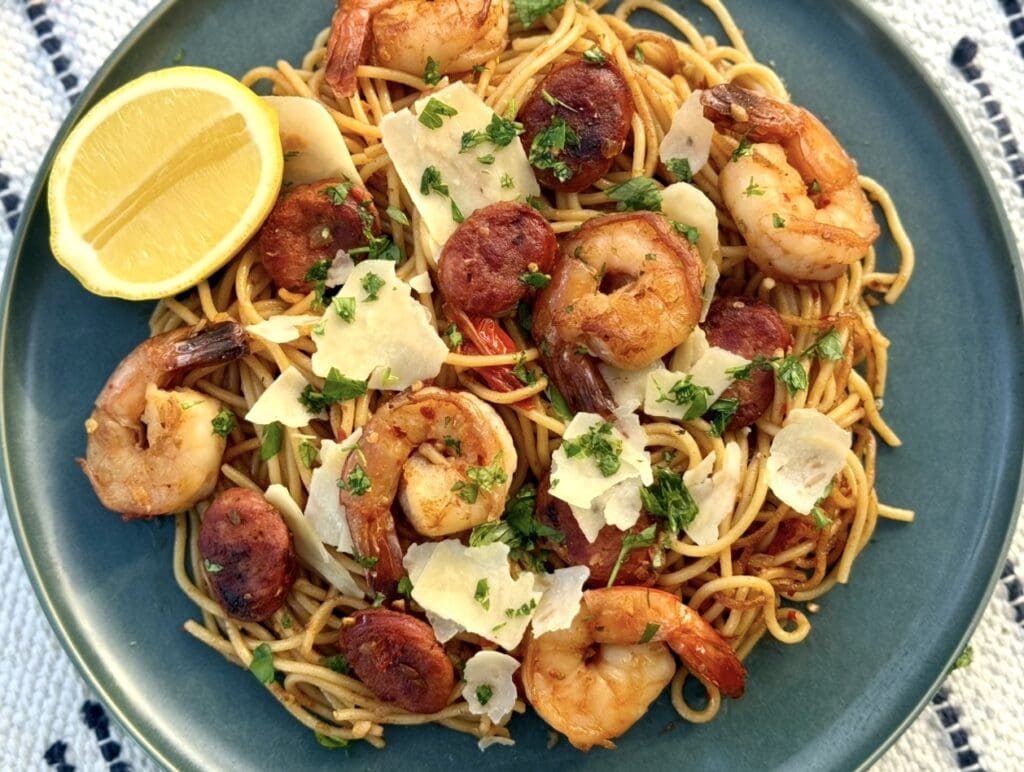
This Prawn and Chorizo Pasta is a culinary delight. Plenty of juicy prawns and sausages with olive oil, garlic, shallots, wine and lemon juice
Updated 16 July 2025
Load your pasta to how you love it!
Judging by these photos, I may have overdone it with the chorizo and prawns. More is less, right? Not in this case! The more plump, juicy prawns and smokey slices of chorizo, the better! No more having to search for the good stuff hidden in our mount of pasta ?
To be honest, I cheated a bit before filming. My pasta had (just a little) more chorizo and prawns than the others. Judge me all you want, but I’m the cook, so I should always get the best bits. That worked out fine until little Kai was born. Can you believe the stuff that kid gets away with? I never imagined I’d let someone steal my prawns or chocolates, but here we are.
It’s the second week of the school holidays, and we just got back from our quick road trip to Bateman Bay. We stayed in a remote cabin in the woods. Driving there, I scared myself silly thinking of horror movies ? The cabin was extra cosy and had the most beautiful views of the beach from it. We would’ve loved to go for a swim, but we would’ve turned into ice cubes because it hit 7 degrees.
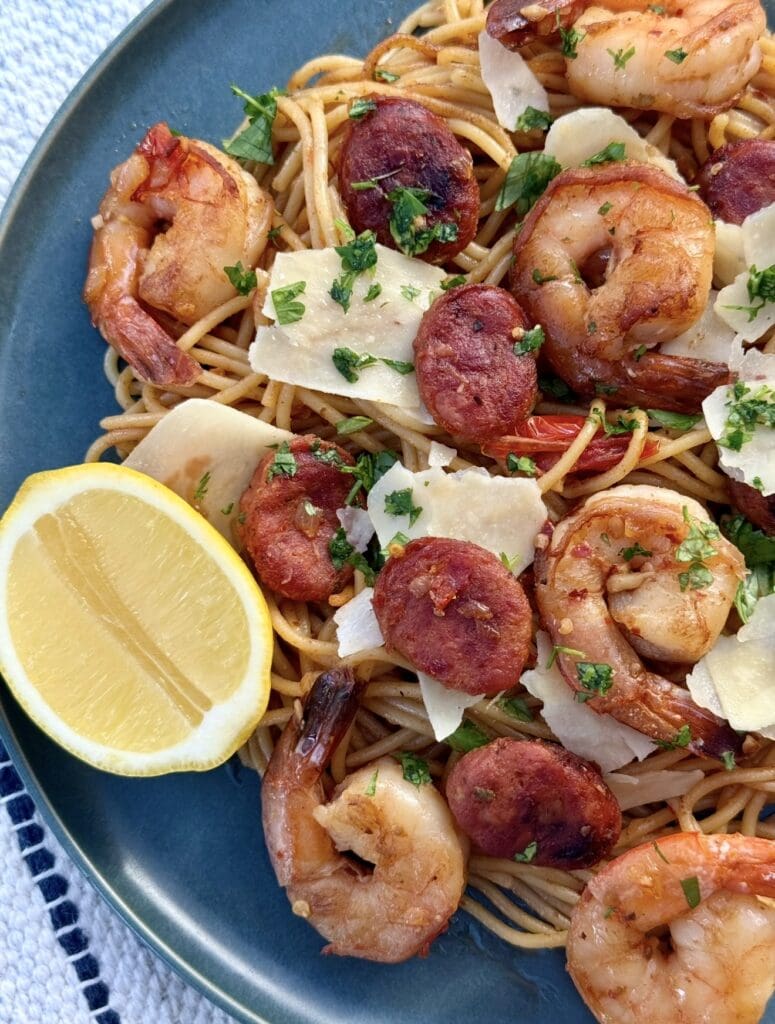
Let’s put aside the soups and stews for now and pretend spring has sprung. It’s the ideal time to treat ourselves to some mouthwatering pasta. Sizzling Spanish chorizo sausages, seared prawns with spaghetti, olive oil, LOTS of garlic, shallots, tomatoes, wine, smoked paprika, chilli flakes and lemon juice.
There you have it, a pasta dish that you’ll be proud to serve and have anytime. A restaurant quality dish without the $$$. It’s truly a winner, considering my husband, a seafood hater, not only had two helpings but also ate the prawns without a word of protest.
Subscribe to 3CatsFoodie’s FREE Newsletter

For the latest recipes and other fun stuff!
Prawn and Chorizo Pasta
What’s Spanish chorizo?
Spanish chorizo is a cured, dry sausage made from pork, seasoned with smoked paprika (pimentón), which gives it its distinctive flavour and red colour. The curing process involves drying and sometimes smoking, resulting in a firm, dry texture. Its flavour is intensely savoury and smoky.
Depending on the brand, it can range from, sweet, spicy to mild. . Make sure to get the fermented and cured sausage (not the fresh, or raw kind), the ones that are usually vacuum sealed and stored in the fridge.
Which prawns to use?
If you have the time and patience, I would always recommend using large fresh raw prawns as they have the best flavour. You could even use the shells to flavour the oil before cooking it with the pasta. Since it was school holidays and I had a five-year-old wanting all my attention, I opted for frozen prawns.
Which kind of pasta would be best?
You could really use any long or short pasta here, but I prefer using spaghetti or linguine. For short pasta, penne would be a good option. Feeling extra indulgent? Go for fresh silky pasta!
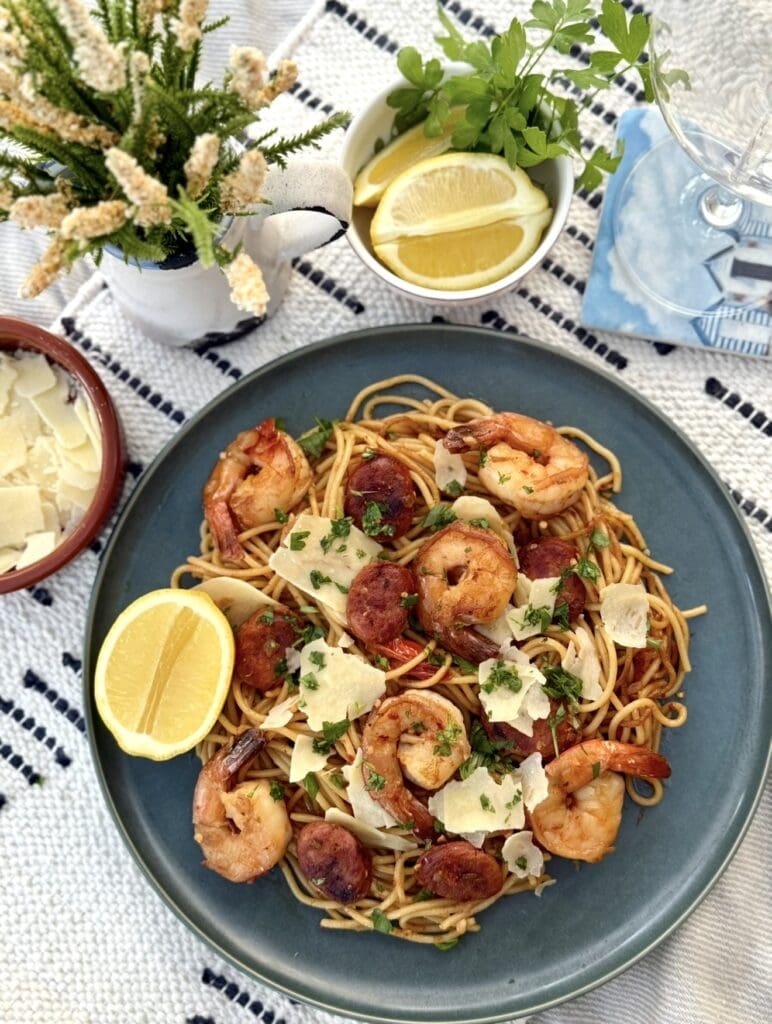
What does adding pasta water do?
Adding pasta water to sauces emulsifies the sauce and helps it cling to the pasta. The starch in the water thickens the sauce, while the salt seasons the dish.
Why cook the chorizo and prawns first?
Cooking the chorizo first releases its flavourful oils into the pan, which then infuse the prawns as they cook, creating a richer, more complex taste.
Ingredients for Prawn and Chorizo Pasta
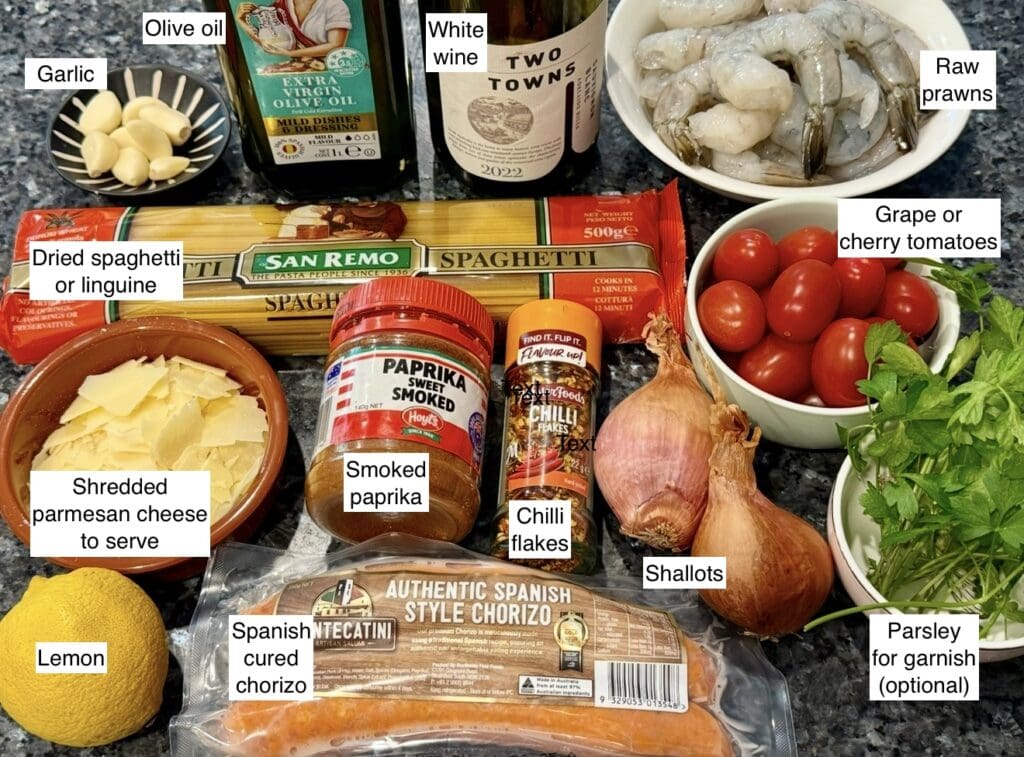
Spanish chorizo – We want the fermented and cured sausage (not the fresh, or raw kind), the ones that are usually vacuum sealed and stored in the fridge. The curing process involves drying and sometimes smoking, resulting in a firm, dry texture. Its flavour is intensely savoury and smoky.
Raw prawns – I used raw frozen peeled prawns, which were conveniently deveined and cleaned before packaging. The frozen prawns need to be thawed completely in the fridge, then drained of any excess water and patted dry before use. We need 400gm / 14oz of prawn meat (which excludes any shells) for this recipe. If you can spare the time and money, opt for fresh large raw shelled prawns, as they are more delicious and have a more pronounced prawn taste.
Shallots (eschalot or French shallots) – Shallots look like small brown onions but are skinny and oval-shaped with a mild flavour. They’re difficult to peel and are usually more expensive than other types of onions. You could swap them for equal amounts of brown or red onions.
White wine – Any inexpensive white wine will do, but if possible, opt for a ‘dry’ white wine like Sauvignon Blanc, Chardonnay, or Pinot Grigio as they’re less sweet. If you would like to omit the wine, swap it with the same amount of salt-reduced (low sodium) chicken stock, or non-alcoholic wine.
Chilli flakes are dried, crushed, or ground chilli peppers. They vary in heat level and flavour depending on the type of pepper used. Always start with a little, as you can add some more, or you can just omit it.
More mouthwatering pasta recipes to try:
How to make Prawn and Chorizo Pasta
Step-by-step guide with photos
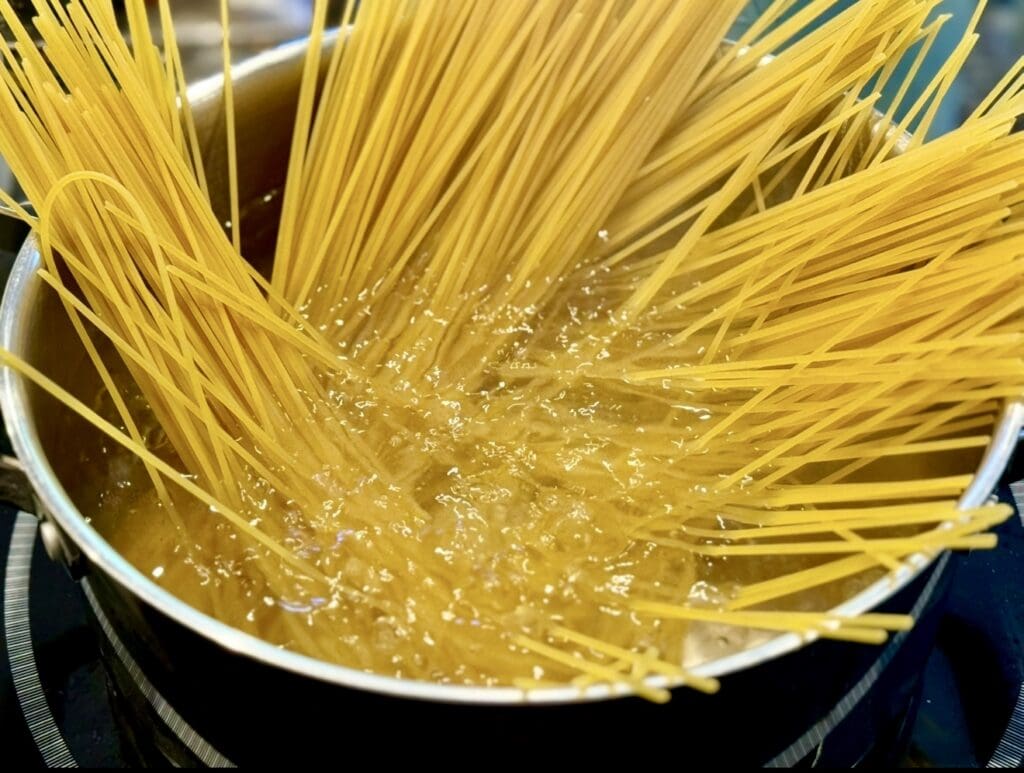
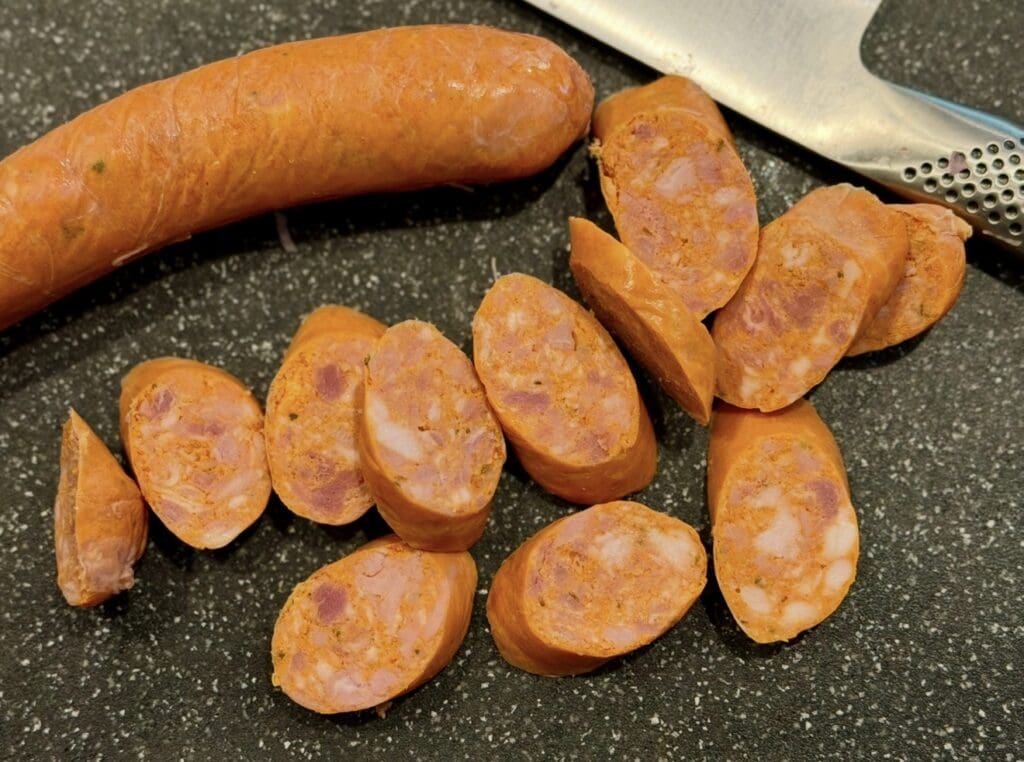
Cook the pasta as per the instruction on the packet, or until ‘al dente’. We want the pasta softened and mostly cooked, but still firm with slight chewiness. Overcooked pasta will go mushy and break. Once the pasta is done, save about 1/2 a cup of pasta water.
To save time with less washing to do, you can cook the pasta alongside the other ingredients, then transfer it straight to the frying pan. I like to drain my pasta, rinse it in cold water, toss it with a bit of olive oil, and keep it aside until ready to use.
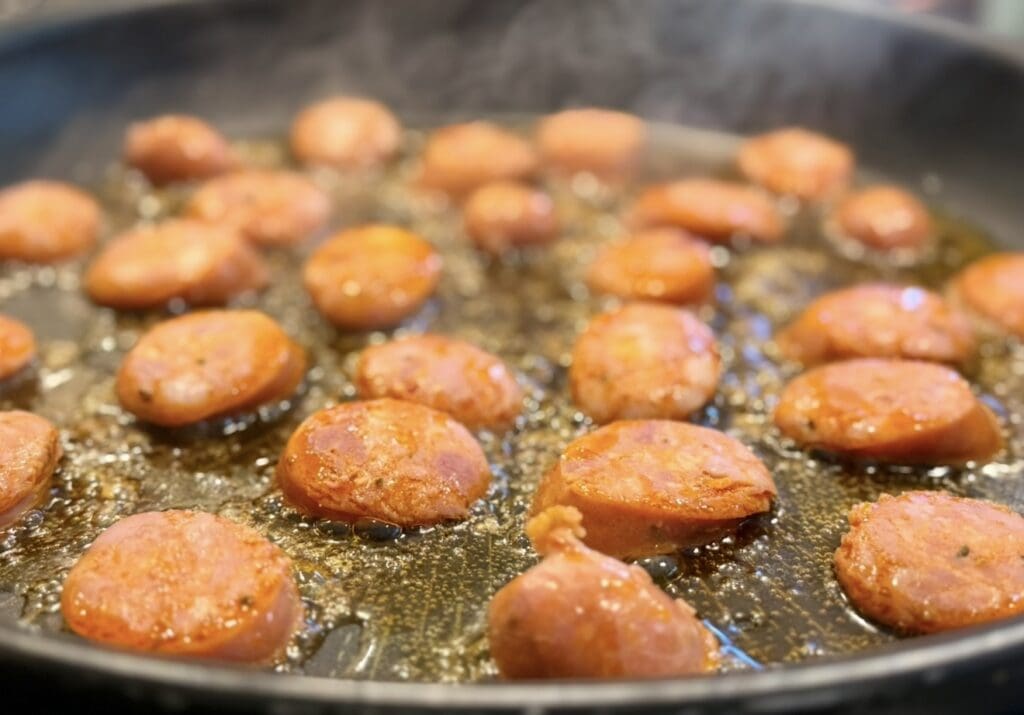
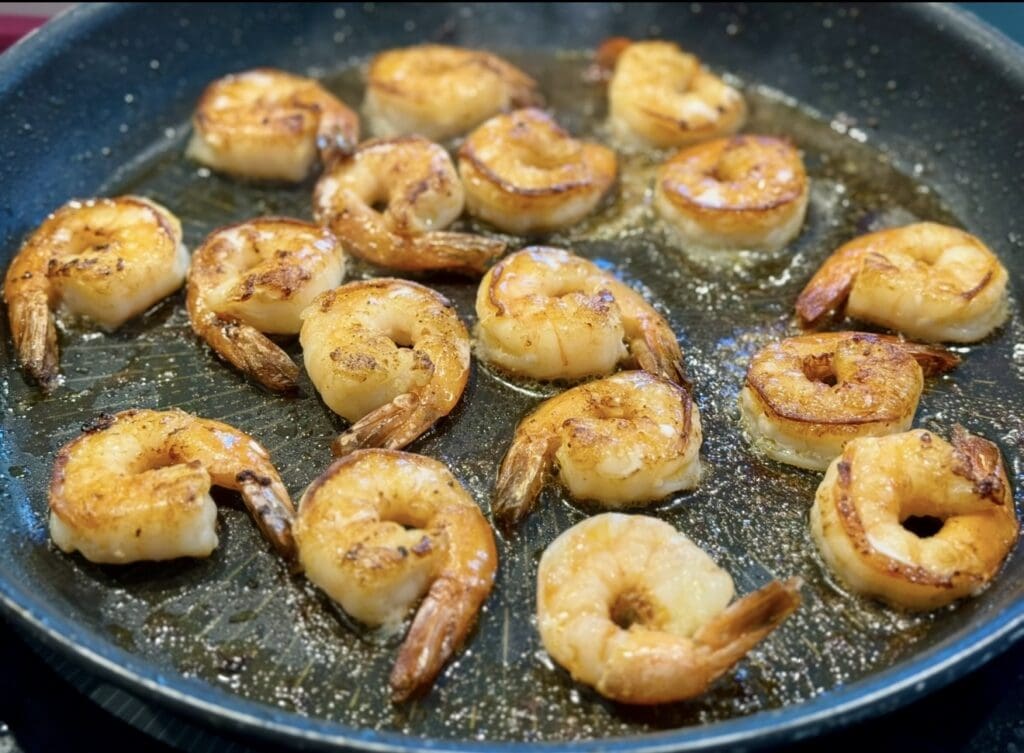
Slice the chorizo into 0.5cm / 0.20 inch pieces, either in rounds or at an angle. Using a large frying pan or skillet, heat 2 tablespoons olive oil over medium-high heat. Add the chorizo and cook it for 1 to 2 minutes per side. Remove the chorizo from pan and transfer onto a plate for later.
Sear the prawns in the same pan, using the leftover oil, for 30 seconds per side. We don’t need to fully cook them yet, as we will finish cooking them with the pasta.

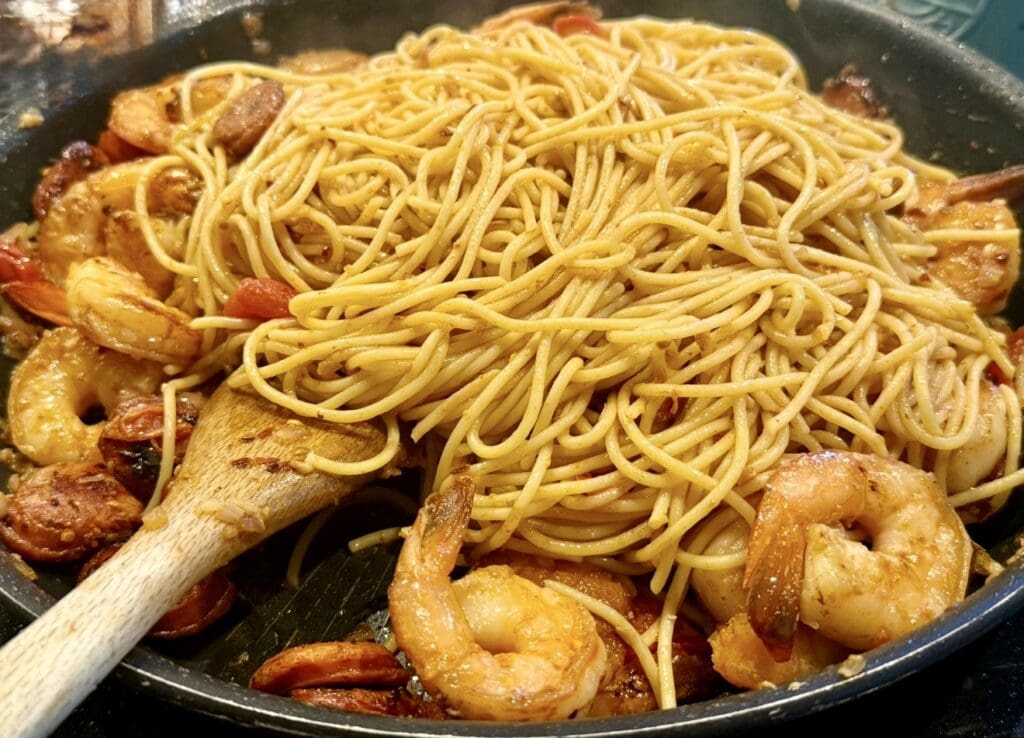

Carefully wipe the same pan with paper towels, using tongs, for safety. Heat 1/2 cup of oil over medium-high heat, then add the garlic and shallots. Saute for a minute, or until shallots soften. Pour in the wine, and cook until the alcohol smells disappears.
Next, put in the tomatoes, paprika, chilli flakes, and salt, then saute until tomatoes soften. Add the pasta, gently folding or tossing to combine with other ingredients, then add the prawns and chorizo.
Keep tossing the pasta until the prawns are cooked through and opaque. Add the lemon juice and 2 to 4 tablespoons of pasta water. Have a taste, and adjust the flavours to your liking if needed, by adding more salt, pepper or more lemon juice. Top the pasta with parmesan cheese and garnish with parsley (optional).
How to store Prawn and Chorizo Pasta
This pasta tastes best when serve immediately because it’s not tomato-based. Allow the leftover pasta cool at room temperature, then put it in an airtight container in the fridge for 2-3 days.
I’ve used a third-party application to calculate the calories and nutritional information, so please use this as an approximate guide only.
Cooking measurements are in Australian standard spoon and cup measurements. For specific details and conversions, visit our Australian Cooking Measurements page.
I would love your feedback and support if you made this recipe. To do this, please rate this recipe and provide a comment by scrolling down this page or by clicking that green circle on the bottom left. An email address is required (for spam), but it won’t be published. I would also love to see your dish, so don’t forget to tag me on my Instagram account ‘3catsfoodie’
Cheers – Cat T
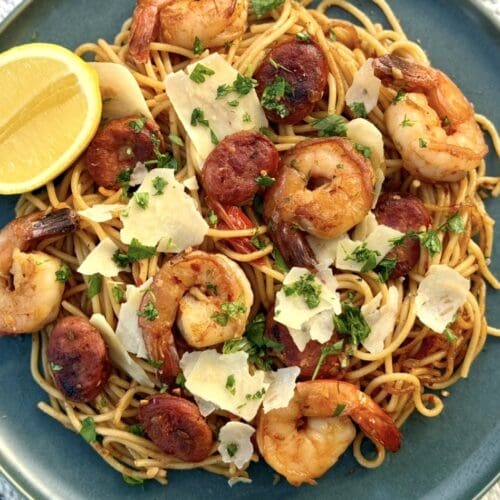
Prawn and Chorizo Pasta
Video
Ingredients
- 400g / 14oz dried spaghetti or linguine
- 2 tbsp (40ml / 1.4floz) olive oil, for browning chorizo & searing prawns
- 200g / 7oz cured Spanish chorizo, cut into 0.5cm thick slices (NOTE 1)
- 400g / 14oz large raw peeled and cleaned prawn/shrimp meat (NOTE 2)
- ½ cup (125ml / 4.2floz) olive oil
- 8 (25g / 0.9oz) large garlic cloves, minced
- 2 (135g / 4.8oz) shallots or eschalots, finely diced (NOTE 3)
- ¼ cup (60ml / 2floz) white wine (NOTE 4)
- 200g / 7oz grape or cherry tomatoes, halved
- 1 tsp smoked paprika
- 2 tsp dried chilli flakes (NOTE 5)
- 1 tbsp (20ml / 0.7floz) fresh lemon juice
- 1 tsp salt
Optional toppings and garnish
- shredded parmesan cheese
- finely chopped parsley
Instructions
- Cook the pasta as per the instruction on the packet, or until 'al dente'. We want the pasta softened and mostly cooked, but still firm with slight chewiness. Overcooked pasta will go mushy and break. Once the pasta is done, save about 1/2 a cup of pasta water. To save time with less washing to do, you can cook the pasta alongside the other ingredients, then transfer it straight to the frying pan. I like to drain my pasta, rinse it in cold water, toss it with a bit of olive oil, and keep it aside until ready to use.

- Slice the chorizo into 0.5cm / 0.20 inch pieces, either in rounds or at an angle. Using a large frying pan or skillet, heat 2 tablespoons olive oil over medium-high heat. Add the chorizo and cook it for 1 to 2 minutes per side. Remove the chorizo from pan and transfer onto a plate for later.

- Sear the prawns in the same pan, using the leftover oil, for 30 seconds per side. We don't need to fully cook them yet, as we will finish cooking them with the pasta.

- Carefully wipe the same pan with paper towels, using tongs, for safety. Heat 1/2 cup of oil over medium-high heat, then add the garlic and shallots. Saute for a minute, or until shallots soften. Pour in the wine, and cook until the alcohol smells disappears.

- Next, put in the tomatoes, paprika, chilli flakes, and salt, then saute until tomatoes soften. Add the pasta, gently folding or tossing to combine with other ingredients, then add the prawns and chorizo. Keep tossing the pasta until the prawns are cooked through and opaque.

- Add the lemon juice and 2 to 4 tablespoons of pasta water. Have a taste, and adjust the flavours to your liking if needed, by adding more salt, pepper or more lemon juice. Top the pasta with parmesan cheese and garnish with parsley (optional).


